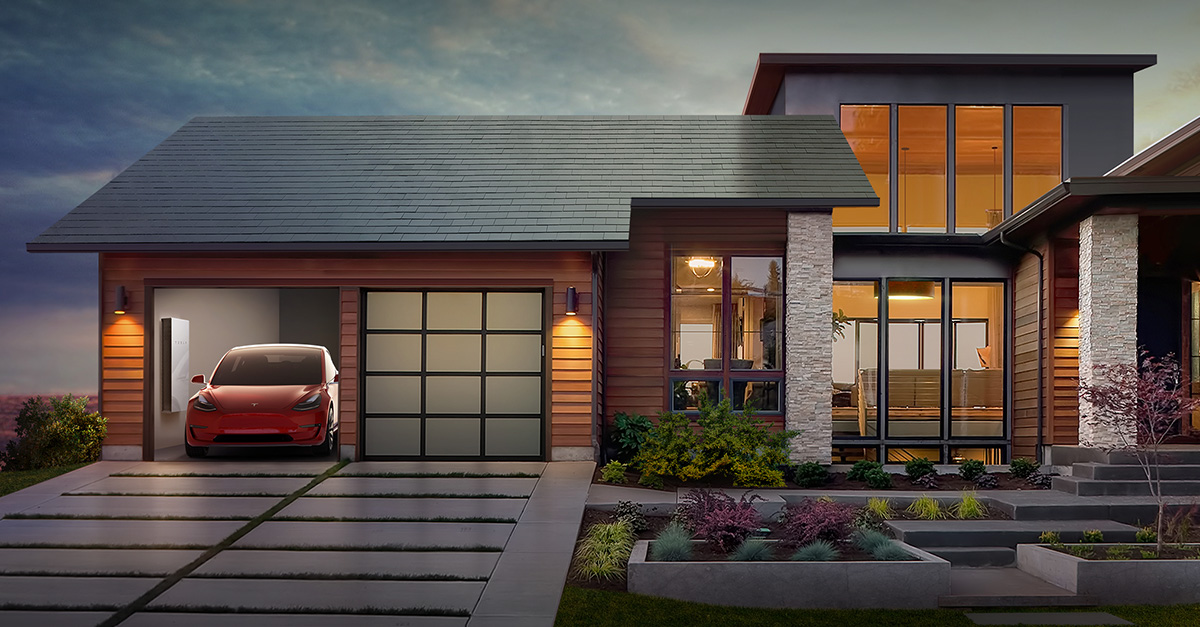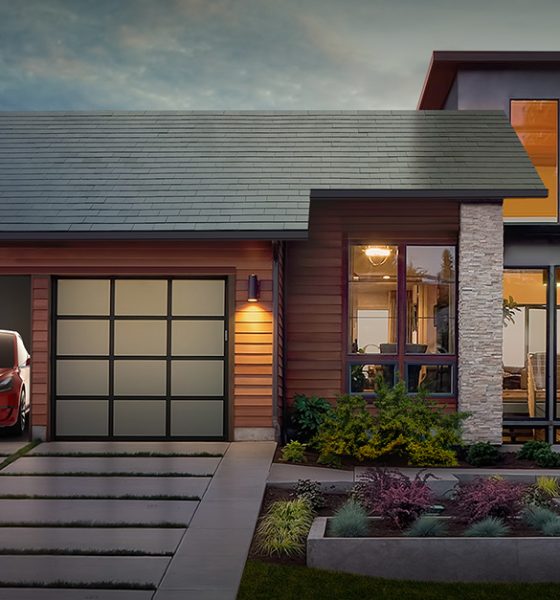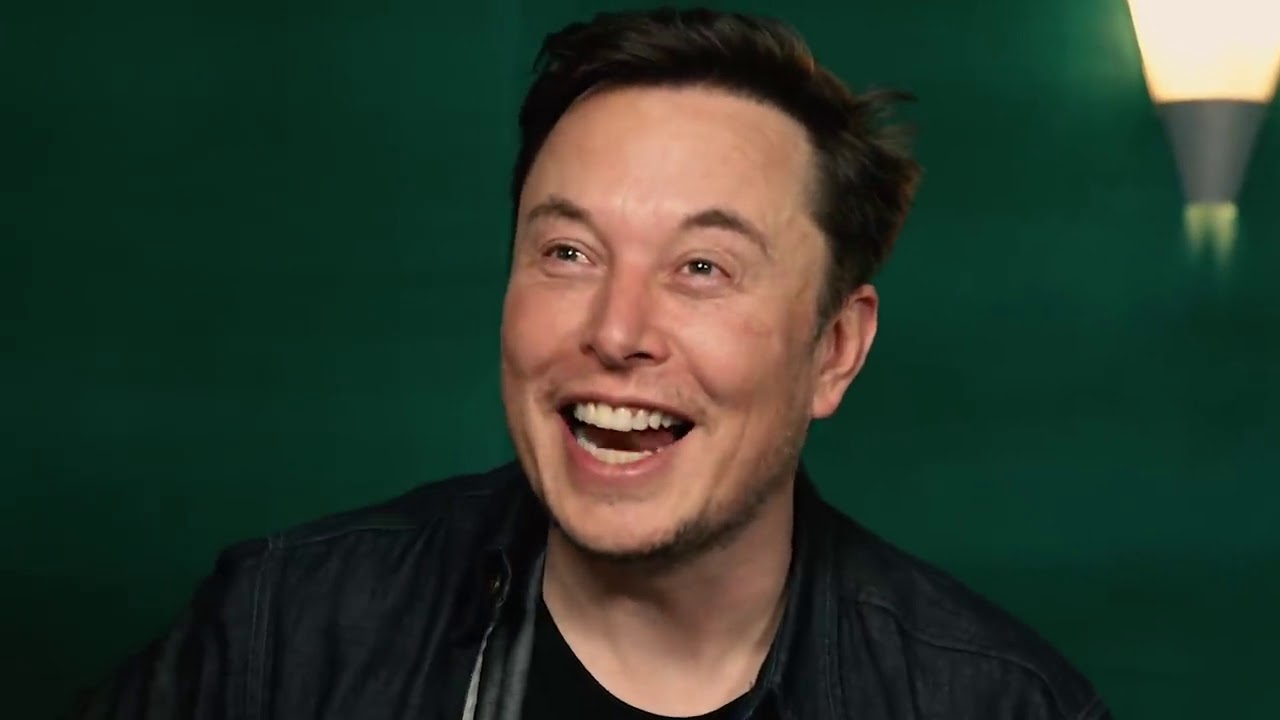

News
Roofing industry keeps close watch on Tesla Solar Roof as production nears
The first installation of Tesla’s highly anticipated Solar Roof product is expected to take place in the coming months, bringing the company one step closer to providing a comprehensive and arguably best looking “sun-to-vehicle” system possible. As we near the inaugural installations, those in the solar industry are keeping a close watch on the impact Tesla’s roll out will have on solar demand and the entire category as a whole.
Tesla’s Solar Roof glass tiles— offered in four styles of Tuscan, Slate, Textured, and Smooth— look like regular roof tiles from ground level, but embedded with photovoltaic solar cells underneath. Tesla claims the glass tiles are more resilient than traditional roof tiles, and the company guarantees them for the lifetime of the house. Sweetening the whole deal, Tesla— with the help of SolarCity, which it merged with in November 2016— includes the labor and materials of tearing down your old roof and installing the new in the purchase of a Solar Roof.
Tesla is not the first to produce solar tiles. In 2016, Dow Chemical stopped its production of solar shingles five years after it first launched them, citing the low efficiency and high costs of their product. Other companies, such as Forward Labs, already produce such a product, but none have the visibility and ability to capture the attention of the media like Tesla and Elon Musk.
Over the past few years, the growth of demand for residential solar installations has begun to slow: consumer preferences have shifted more to community-based systems, electricity prices have plummeted due to falling natural gas and oil prices, and utility companies have begun to push back against catering to those who want to go “off-the-grid.” In an industry with few recent and dramatic product-level innovations, the excitement over residential solar systems has been cooling. According to Forbes, installation growth rates dropped from 63% per year from 2013 to 2015, to merely 16% in 2016. Some believe that Tesla’s high-visibility and loyal consumer base can reinvigorate the market. Grace Robertson, marketing manager of LightWave Solar, a solar installation company not affiliated with Tesla, said that Tesla’s movement has prompted local interest in LightWave Solar and the solar industry as a whole.
“The Solar Roof announcement generated a buzz and we got a few more phone calls than usual,” wrote Robertson in a comment to Teslarati. “It gets people excited about solar.”
But Tesla’s product is not just a replacement for solar panels: it is a replacement for solar panels and the entire roof they sit on. This comes with a hefty price tag. Tesla has advertised that the cost of the solar roof, offset by tax breaks and generation of solar energy, will be competitive with the price of a more traditional roof made with comparable materials. But these “comparable materials”— slate, glass, and terra-cotta— do not include the asphalt shingles that top over 75% of American homes. That focuses the market down to the other 25%.
According to Tesla’s Solar Roof cost calculator, the estimated cost and benefit of a solar roof is highly dependent on one’s location, typical electricity bill, and square footage of your house. For a typical residence in Massachusetts of 2,400 square feet with a $215/mo electric bill, a solar roof in which 60% of tiles are solar panels, would cost $71,600, not including the addition of a Powerwall 2 home battery storage system. Offsetting the cost is the projected $99,300 worth of energy generated by the roof over 30 years in addition to a $20,400 federal tax credit. Over those 30 years, Tesla estimates the home-owner will earn a net $41,100. Not a bad deal, although re-roofing the same house with asphalt shingles would cost only around $11,000 to $17,000. For a similar-sized house in central Iowa, the Tesla calculator recommends a covering of 50% solar tiles for the roof, with an upfront price tag of $40,500 (plus a $7,000 Powerwall 2 battery) for a net cost of $7,100 over 30 years. Not as great a deal.
For some, high property taxes and already low electricity bills make these upfront costs even less attractive. As Senior Technology Editor at Ars Technica Lee Hutchinson pointed out on Twitter: “My 2600sqft **HOUSE** only cost $200k. My property taxes would explode w/adding another 50% onto the home’s appraised value [with a solar roof].”
This is true. The economics are not yet compelling where housing and utility costs are low and property taxes are high.
— Elon Musk (@elonmusk) May 10, 2017
Hutchinson lives in Texas, and expressed the concerns of many who wish they could buy into the solar roofs, but can’t get past the sticker shock. Elon Musk replied that he understood the concern over the high prices, tweeting: “This is true. The economics are not yet compelling where housing and utility costs are low and property taxes are high.”
Robertson, from LightWave Solar, noted that while Tesla’s product is bringing renewed interest to the solar industry, she does not expect the solar roof to significantly impact the sales of more traditional solar panels due to these high upfront costs.
“Since most of our customers want the most cost-effective solar solution, we don’t expect the Solar Roof to put much of a dent in our sales of traditional solar panels,” wrote Robertson.
However, in an op-ed for the San Francisco Tribune, CEO and founder of EnergySage Vikram Aggarwal, an online solar marketplace backed by the U.S. Department of Energy, argued that the buzz around Tesla’s Solar Roof may not be too good for traditional solar installers after all. Aggarwal wrote that before the tiles are installed and tested on real people’s houses, the uncertainty around the roof’s total cost and energy production will cause consumers to delay buying the product until more information is available. In the meantime, those who have become excited about solar energy are not giving business to local solar panel installers either.
“The Tesla Solar Roof should be viewed as a well-designed luxury roofing product first — its solar production benefits are an additional benefit, but not its core offering,” wrote Aggarwal. “Until more comprehensive, transparent information about the all-in costs of the Tesla Solar Roof are made available, his revolutionary product may only take the wind out of the rest of the solar industry’s sails.”
But for those who are already willing to pay for high-end roofing materials and who are looking to re-roof in the near future, the Solar Roof could be a great addition to their house and other Tesla products.
With the high costs and slow roll-out, the Solar Roof isn’t expected to immediately revolutionize the solar industry in the US. Most people probably will not see solar shingles in their neighborhood for several years yet. What it will do is push the solar industry back into the limelight for at least a few months and encourage consumers to reimagine a home powered by the sun in a new era of fashionable renewable energy. Tesla is not the first to bring accessible solar to residential areas, but it is the first in a long time to make it cool.
Elon Musk
Elon Musk just roasted Sam Altman’s Tesla Roadster cancellation
“And you forgot to mention act 4, where this issue was fixed and you received a refund within 24 hours.
But that is in your nature.”

Elon Musk has responded to OpenAI CEO Sam Altman’s decision to cancel his Tesla Roadster reservation, which he revealed on X on Thursday.
We reported on Altman’s decision, which he called “A tale in three acts,” showing his confirmation email from Tesla back in 2018, an email requesting his $50,000 deposit back after canceling his order, and a notification from Google that the email he sent was not delivered.
A tale in three acts: pic.twitter.com/ClRZBgT24g
— Sam Altman (@sama) October 30, 2025
Musk did not take too kindly to the post from his tech rival, first referencing his position with OpenAI, and then confirming that Altman received his reservation deposit back within 24 hours:
And you forgot to mention act 4, where this issue was fixed and you received a refund within 24 hours.
But that is in your nature.
— Elon Musk (@elonmusk) November 1, 2025
OpenAI was started by Musk, Altman, and others back in 2015, and was geared toward being a non-profit company that would develop safe artificial intelligence that would be accessible to people.
However, Musk and Altman did not agree on the future of the company. Musk left, and Altman turned OpenAI into a for-profit company. This led to a variety of lawsuits and some very public spats between the two. Musk has called out Altman for turning the company into a for-profit, which has been his main source of criticism for his former colleague.
The Roadster has been hanging in the balance of Tesla’s manufacturing plans for seven years, but the company has made more indications that it will be unveiled later this year and will have some insane technologies.
Musk said on Friday in an episode of the Joe Rogan Experience Podcast that Tesla is “getting close to demonstrating the prototype.”
He said:
“Whether it’s good or bad, it will be unforgettable. My friend Peter Thiel once reflected that the future was supposed to have flying cars, but we don’t have flying cars. I think if Peter wants a flying car, he should be able to buy one…I think it has a shot at being the most memorable product unveil ever. [It will be unveiled] hopefully before the end of the year. You know, we need to make sure that it works. This is some crazy technology in this car. Let’s just put it this way: if you took all the James Bond cars and combined them, it’s crazier than that.”
Musk hinted that the vehicle could fly and would have “crazy technology” that would put James Bond’s vehicles to shame. It will be interesting to see what Tesla will unveil when the event happens and if it can come through on this mind-blowing teaser.
News
SpaceX successfully launches 100th Starlink mission of 2025
With 100 Starlink missions completed for 2025, space enthusiasts have noted that SpaceX has successfully launched 2,554 Starlink satellites so far this year.

SpaceX achieved its 100th Starlink mission of the year on Friday, October 31, marking another milestone for 2025.
A Falcon 9 rocket carrying 28 Starlink broadband satellites successfully lifted off from Vandenberg Space Force Base in California at 4:41 p.m. ET, carrying another 28 Starlink satellites to Low Earth Orbit (LEO).
Falcon 9 booster’s 29th flight
Roughly 8.5 minutes after liftoff, the Falcon 9’s first stage touched down on the drone ship Of Course I Still Love You in the Pacific Ocean. This marked the booster’s 29th flight, which is approaching SpaceX’s reuse record of 31 missions.
This latest mission adds to SpaceX’s impressive 138 Falcon 9 launches in 2025, 99 of which were dedicated to Starlink, according to Space.com. The company’s focus on reusing boosters has enabled this breakneck pace, with multiple launches each week supporting both Starlink’s expansion and external customers.
Starlink’s network continues massive global expansion
Starlink remains the largest active satellite constellation in history, with more than 10,000 satellites launched, nearly 8,800 of which are currently active. SpaceX recently achieved Starlink’s 10,000-satellite milestone. With 100 Starlink missions completed for 2025, space enthusiasts have noted that SpaceX has successfully launched 2,554 Starlink satellites so far this year.
Starlink, which provides high-speed, low-latency internet connectivity even to the world’s most remote areas, has been proven to be life-changing technology for people across the globe. The service is currently operational in about 150 countries, and it currently has over 5 million subscribers worldwide. From this number, 2.7 million joined over the past year.
News
Tesla shares updated timeframe for Cybertruck FSD V14 release
The Cybertruck was expected to receive FSD V14 before the end of the month, but Tesla was not able to meet the target.

Tesla’s Full Self-Driving (FSD) V14 update for the Cybertruck could arrive this weekend, as per recent comments from Director of Autopilot Software and VP of AI Ashok Elluswamy.
The Cybertruck was expected to receive FSD V14 before the end of the month, but Tesla was not able to meet the target.
Cybertruck FSD V14
Considering the extended wait for FSD V14, it was no surprise that several Cybertruck owners were asking for updates about the system’s rollout to the all-electric pickup truck on Friday. These included the official Cybertruck X account, which responded to Elluswamy’s end of month estimate with “I only see trick. Where is my treat.”
This prompted a response from the AI executive, who replied with, “Sorry, pushing for early access Cyber release over the weekend.” This means that if all goes well, Cybertruck owners would be able to experience FSD V14 very soon. Some, however, are wondering if Tesla would go straight to V14.2 for the Cybertruck’s FSD V14 update, or if the vehicle will receive V14.1 first.
Tesla pushes to unify FSD experience across its lineup
The upcoming Cybertruck rollout represents the next step in Tesla’s efforts to roll out FSD capabilities across all of its vehicles. FSD V14 is a notable step forward for the company’s AI-driven self driving system, with features like Mad Max mode getting positive reviews from longtime Full Self Driving testers.
For the Cybertruck, the FSD V14 update would mark one of its first major over-the-air upgrades for the vehicle. Likely due to its size, the Cybertruck tends to receive FSD updates later than the S3XY lineup, which is quite surprising considering that the all-electric pickup truck is a premium-priced vehicle that is home to some of Tesla’s most advanced technologies.
-

 News2 weeks ago
News2 weeks agoTesla might be doing away with a long-included feature with its vehicles
-

 News2 weeks ago
News2 weeks agoTesla updates fans on its plans for the Roadster
-

 Elon Musk2 weeks ago
Elon Musk2 weeks agoElon Musk: Grok 5 now has a 10% chance of becoming world’s first AGI
-

 News2 weeks ago
News2 weeks agoTesla is ramping up its hiring for the Cybercab production team
-

 News2 weeks ago
News2 weeks agoTesla rolled out a new feature with FSD v14 to fix a major complaint
-

 Elon Musk2 weeks ago
Elon Musk2 weeks agoElon Musk hits back at former Tesla employee who disagrees with pay package
-

 News2 weeks ago
News2 weeks agoTesla just made Service even easier and more convenient
-

 News2 weeks ago
News2 weeks agoTesla Model Y L becomes China’s 4th best-selling mid-to-large SUV in its first month of sales







